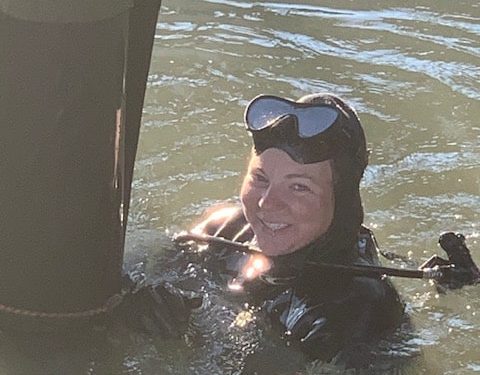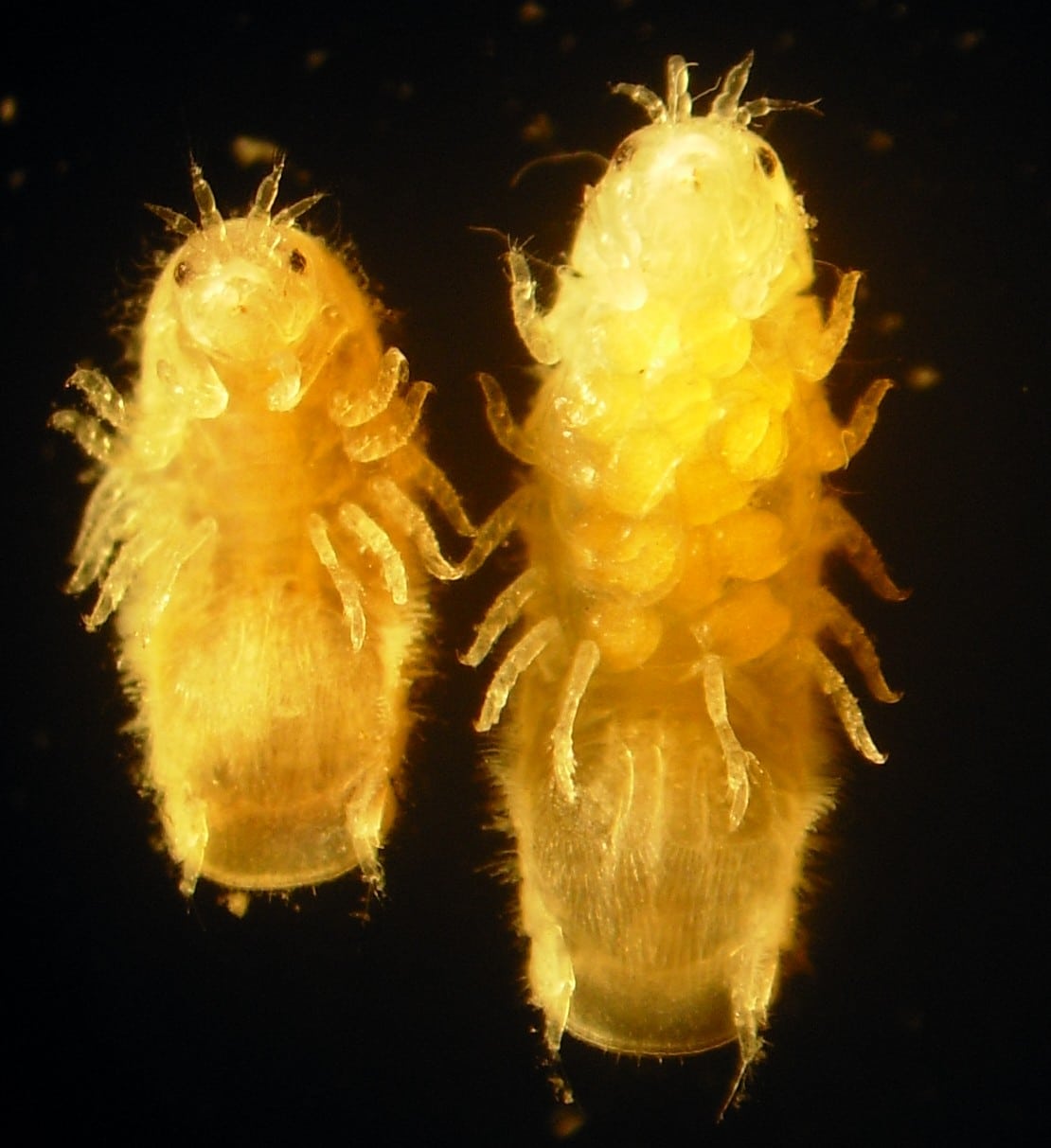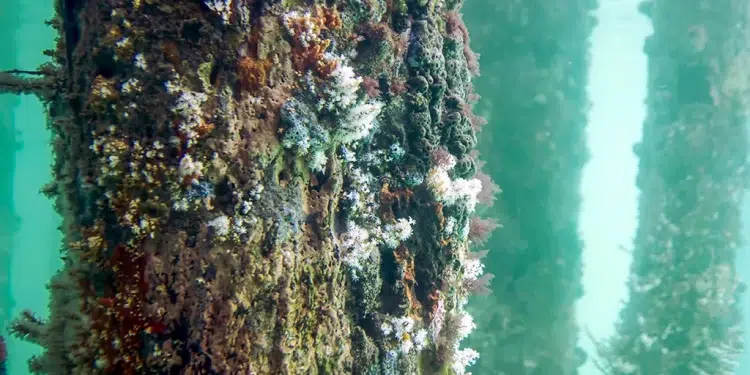You regularly clean and maintain your boat, but keeping your dock in good condition requires the same level of inspection and repair. Unfortunately, dock maintenance often goes overlooked until there’s a problem. When the pilings and cross bracings are neglected, excessive marine growth, physical impact, and marine borer infestation can cause thousands of dollars in damage. A dock inspection, cleaning, and bottom survey can identify issues early and protect your investment.
Routine and Post-Event Inspections
A routine inspection should be conducted annually to record the condition of pilings, stringers, and hardware. By forming a baseline, deterioration can be monitored and maintenance can be performed in a timely manner. Post-event inspections are done to assess the integrity of the dock after any damaging event, such as a hurricane or boat collision. While it is recommended to hire certified commercial divers to inspect and maintain your dock, it is possible to handle an inspection on your own.

What to Look for During Dock Maintenance: Hidden Damage
Pilings can look like new from the surface, but below, marine growth can hide severe damage from view. It’s necessary to remove the growth in order to properly inspect for any damage. You can use the claw of a hammer, spade shovel, or a heavy-duty taping knife to remove oysters and barnacles. Also check the pilings for washout at the mudline, especially in areas that have strong currents.
This next step in dock maintenance is crucial. With the pilings and bracings clean, look for damage to hardware and signs of marine borer activity (tiny holes from burrowing invertebrates). Hardware should be checked for tightness, corrosion, and to ensure that there are no missing or protruding fasteners. Every structural connection is also a prime location to observe for marine borer activity. When you look for damage, it’s best to know the enemy.
Shipworms are mollusks that attack from the intertidal zone to the mudline and are undeterred by pressure-treated wood. Though their burrows are the size of a pinhole, there can be significant damage to the structure before there are outward signs of a shipworm infestation.

Pholads can penetrate the toughest of wood, stone, and shell. While pholads don’t consume the wood as food, they do make a permanent residence out the tunnels they bore into your pilings, stringers, and even your concrete seawall. Their entrance hole is usually a quarter-inch in diameter, growing in width as they burrow deeper.
Gribbles and pill bugs are isopods that can cause pilings to have a honeycomb appearance or hourglass shape late in the infestation. The initial burrow of a pill bug is around a quarter-inch in diameter while the gribble’s entry burrow is barely perceptible. Both commonly attack the intertidal zone.
The termites of the sea are unforgiving, but proactive measures can be taken if you catch an infestation early.
With the pilings and bracings clean, look for damage to hardware and signs of marine borer activity (tiny holes from burrowing invertebrates). Hardware should be checked for tightness, corrosion, and to ensure that there are no missing or protruding fasteners. Every structural connection is also a prime location to observe for marine borer activity. When you look for damage, it’s best to know the enemy.
Shipworms are mollusks that attack from the intertidal zone to the mudline and are undeterred by pressure-treated wood. Though their burrows are the size of a pinhole, there can be significant damage to the structure before there are outward signs of a shipworm infestation.
Piling Wrap and Encasements
Depending on the level of damage, there are a couple of alternatives to full piling replacement: piling wrap and encasement. For pilings with minimal borer activity, wrapping the piling with vinyl will kill off the existing infestation and prevent further attack.
Wrap is an inexpensive way to protect timber pilings but still requires light maintenance. Boat impacts and debris can puncture the wrap, and over time, barnacles can grow along the seams, allowing marine borers inside. Growth can easily be scraped off with a taping knife and should be done annually. Pay attention not to gouge the wrap while cleaning it.
Pilings with extensive marine borer damage can potentially be salvaged with concrete jacketing. This process involves encasing the piling with PVC that extends from above
the high tide line to below the mudline and filling the form with concrete.
If replacement is necessary, new timber pilings should be wrapped with vinyl after being driven to prevent the wrap from being damaged during the pile-driving process. Composite pilings are also an alternative to timber piles. Typically made from vinyl or fiberglass, they are filled with concrete once installed and are a low-maintenance and cost-effective alternative to standard timber pilings.
With the dock assessed below the waterline, it’s worth taking a moment to look at your seawall or bulkhead.
Seawalls and Bulkheads During Dock Maintenance
Seawalls and bulkheads are intended to prevent erosion, flooding, and damage to your property. At low tide, look for signs of cracking, corrosion, or sinkholes. Weepholes should be cleaned annually; these relief openings can become clogged with debris and marine growth, keeping them from flowing freely.
Above the Waterline
Many people overlook this part of dock maintenance inspections. When you look above the waterline, search for signs of distress in load-bearing areas and deterioration of hardware and condition of connections. Inspect decking for sagging, rotted or loose planks, and signs of fungal rot on the tops of surfaces or areas that remain wet.
“Fuzzy Wood” vs. Fungal Decay
Salt damage is often confused with fungal decay. Saltwater penetrates the wood and moves up the grain through the xylem cells in a process called wicking. Over time, salt residue expands and damages the wood, causing it to appear fuzzy. If you see signs of wicking, be sure to inspect the hardware closely for corrosion. While unsightly, salt damage isn’t cause for immediate alarm. Paints and other wood coatings can prevent or slow the process.
Fungal rot, however, can lead to structural failure. Brown-rot decay darkens the wood, cracks run across the grain, and it’s brittle to the touch; whereas, white-rot decay appears bleached, maintains its shape, and feels spongy. Fungicides can be used to treat or prevent decay.
Now that the dock and seawall are clean and protected, it’s time to find out what else is down there.
Bottom Surveys/Debris Removal
Summer is on the way, and no one wants to miss an opportunity to enjoy the water. But how much do you know about the underwater hazards around your dock? The sea bottom can change due to harsh weather, tides, and currents.
Whether you are swimming off your dock or taking your boat out for the day, marine debris can be a major safety hazard. Submerged pilings, tree limbs, rip rap, and other heavy litter all pose a serious threat. This hidden debris can create injuries from jumping or diving off docks. Even small things like fishing tackle or rope can cause swimmers to get entangled under the water or foul a propeller. Depending on water depth, it may be best to hire certified divers to identify and remove debris from around your dock. Bottom surveys are recommended every five years or after a major storm.
Dock Maintenance Timetable
The American Society of Civil Engineers recommends routine inspections every five years for concrete, wrapped wood, composite materials, and protected steel and every four years for unprotected timber and steel. This interval is for structures already in good condition.
Inspections should be more frequent based on deterioration, anticipated use, and potential damage from storms or vessel impacts. Annual cleanings, however, can extend the service life of your dock by identifying potential issues, increasing “curb appeal,” and saving money in the long run.
-By Stacy Stepanovich















